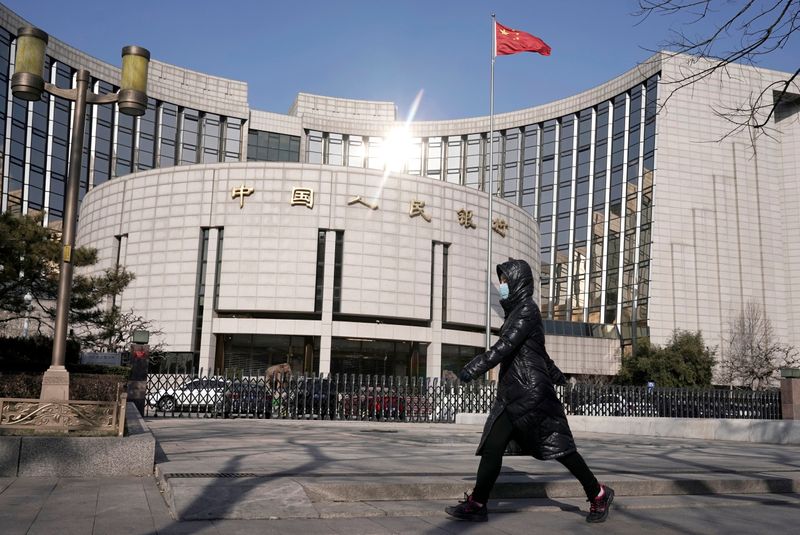SHANGHAI (Reuters) – China kept its benchmark lending rate steady for the third straight month on Monday, matching market expectations, amid signs that the world’s second-largest economy is recovering from the shock coronavirus pandemic.
The one-year loan prime rate (LPR) <CNYLPR1Y=CFXS> was kept unchanged at 3.85%, while the five-year LPR <CNYLPR5Y=CFXS> remained at 4.65%.
Most new and outstanding loans are based on the LPR, while the five-year rate influences the pricing of mortgages.
Thirty-four out of 36 participants in a Reuters survey had expected no adjustment to LPR in July after the People’s Bank of China kept borrowing cost on medium-term lending facility (MLF) unchanged last week.
MLF, one of the PBOC’s main tools in managing longer-term liquidity in the banking system, serves as a guide for the LPR.
The interest rate on one-year MLF loans to financial institutions <CNMLF1YRRP=PBOC> also stayed unchanged at 2.95% for three straight months.
Against the backdrop of improving economic data, analysts and economists said policymakers have started to shift away from powerful, emergency monetary easing to more targeted schemes to help areas of the economy that are still struggling. Policymakers are also concerned that too much stimulus could stoke more debt and financial risks.
Official data showed China’s economy grew 3.2% in the second-quarter from a year earlier, faster than the 2.5% expected by analysts, as lockdown measures ended and policymakers ramped up stimulus after a record, virus-induced contraction early in the year.
The LPR is a lending reference rate set monthly by 18 banks. The PBOC revamped the mechanism to price LPR in August 2019, loosely pegging it to the MLF rate.
(Reporting by Winni Zhou and Andrew Galbraith; Editing by Kim Coghill)






















